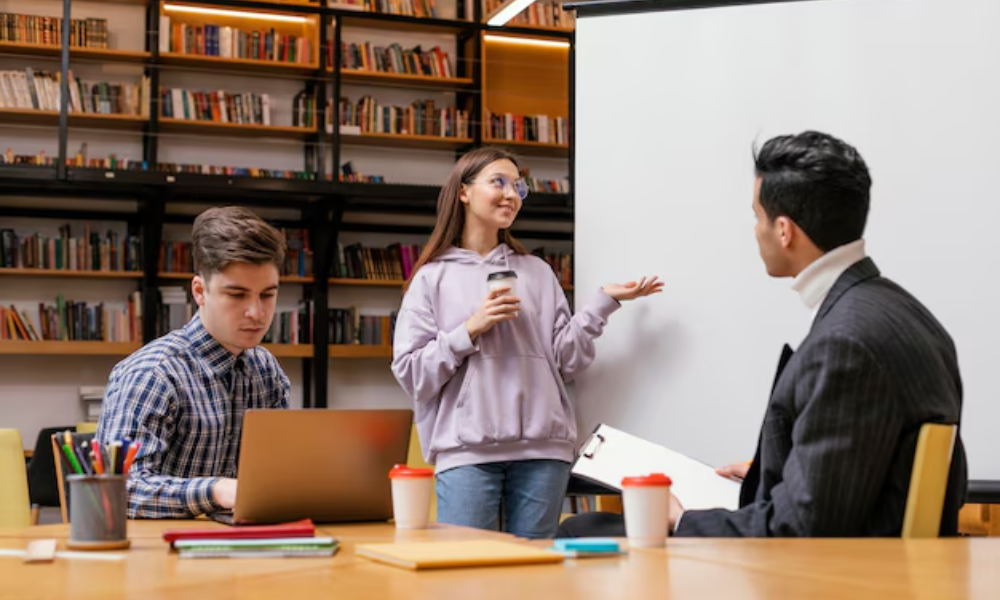In recent years, student-led conferences have emerged as a transformative approach in education, allowing students to take the lead in discussing their learning journeys.
This innovative method empowers students to articulate their progress, goals, and challenges directly to their parents and teachers. By fostering a collaborative environment, student-led conferences enhance accountability, self-reflection, and communication among all stakeholders.
I. What are Student-Led Conferences?

Student-led conferences are meetings where students present their academic progress and achievements to their parents or guardians, often with the guidance of their teachers. The primary purpose of these conferences is to foster student ownership of their learning and to enhance communication among students, parents, and educators.
Unlike traditional parent-teacher conferences, which typically involve teachers discussing students’ performance, student-led conferences shift the focus to students as active participants. This method encourages students to take responsibility for their education and promotes a deeper understanding of their learning processes.
II. Benefits of Student-Led Conferences

The benefits of student-led conferences extend beyond the immediate conference experience, offering significant advantages for students, parents, and educators:
- Improved Student Ownership and Accountability: By leading the conference, students take greater responsibility for their learning. They articulate their strengths and areas for improvement, fostering a sense of accountability that motivates them to excel.
- Enhanced Communication Between Students, Parents, and Teachers: These conferences create a direct line of communication among all parties. Parents gain insight into their child’s learning experience, while teachers can observe students’ ability to discuss their progress and challenges.
- Increased Student Self-Reflection and Self-Assessment: Students are encouraged to evaluate their performance, set personal goals, and reflect on their learning strategies. This process helps develop critical thinking and self-assessment skills that are vital for lifelong learning.
In girls’ schools in Uttarakhand, these benefits are particularly impactful, as they empower young women to take charge of their education and express their aspirations confidently.
III. Implementing Student-Led Conferences

Implementing student-led conferences requires thoughtful planning and preparation. Here are essential steps to ensure successful conferences:
- Preparing Students for Leadership Roles: Educators should provide training and resources to help students understand the conference process. This might include practice sessions where students can rehearse their presentations and receive feedback.
- Training Teachers and Staff: Teachers play a crucial role in facilitating these conferences. Providing professional development opportunities can equip them with the skills necessary to support students effectively.
- Creating a Supportive Conference Environment: The setting of the conference should be welcoming and conducive to open dialogue. Arranging the room to promote interaction and ensuring that all participants feel comfortable can enhance the experience.
IV. Tips and Best Practices

To maximize the effectiveness of student-led conferences, educators should consider the following tips and best practices:
- Encouraging Student Reflection and Self-Assessment: Provide students with tools and prompts to guide their reflections. This may include guiding questions that help them articulate their learning experiences and set future goals.
- Using Technology to Enhance Conferences: Incorporating technology, such as digital portfolios or presentation software, can make conferences more engaging. This approach allows students to showcase their work creatively and effectively.
- Involving Parents and Guardians: Encourage parents to actively participate in the conference by asking questions and providing feedback. Their involvement fosters a collaborative atmosphere and emphasizes the importance of the home-school connection.
V. Resources and Templates

To aid educators in organizing student-led conferences, several resources and templates can be utilized:
- Sample Conference Agendas: A structured agenda can help guide the conference and ensure that all essential topics are covered.
- Student Self-Assessment Rubrics: These rubrics can provide students with clear criteria for evaluating their performance, helping them identify strengths and areas for improvement.
- Parent Feedback Forms: Gathering feedback from parents can help educators refine the conference process and better understand the impact of student-led conferences on families.
VI. Overcoming Challenges

While implementing student-led conferences can be highly beneficial, there are common challenges that educators may face:
- Addressing Common Obstacles: Time constraints and student reluctance can hinder the success of conferences. Educators should allocate sufficient time for preparation and practice, and create a supportive environment that encourages participation.
- Strategies for Different Learning Environments: Tailoring the approach for various educational levels, from elementary to secondary, can enhance effectiveness. For younger students, simpler presentations may be more appropriate, while older students can engage in more complex discussions.
VII. Conclusion
In conclusion, student-led conferences represent a powerful tool for promoting student ownership, communication, and self-reflection. The benefits of these conferences extend well beyond the classroom, fostering a culture of accountability and growth in students.
As educators in girls’ schools in Uttarakhand strive to empower young women, implementing student-led conferences can significantly enhance their educational experience. We encourage all educators to consider adopting this innovative approach to support student development and foster a collaborative learning environment.
